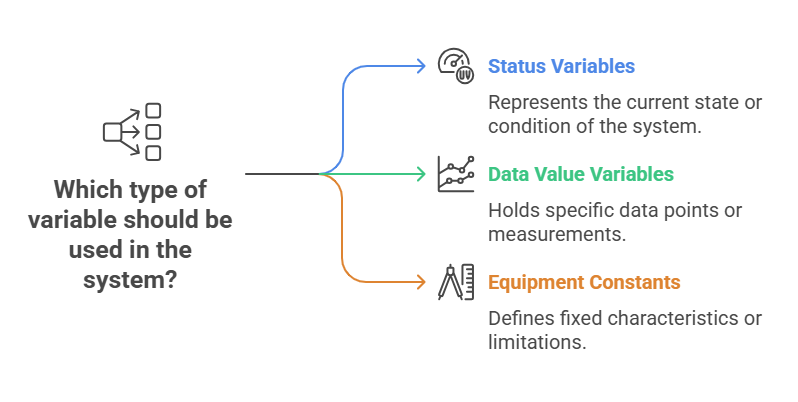In modern semiconductor fabs, efficiency, traceability, and automation depend heavily on seamless communication between equipment and factory host systems. This is where SECS/GEM standards play a critical role. SECS (SEMI Equipment Communications Standard) and GEM (Generic Equipment Model) together define how semiconductor equipment and host software exchange information for monitoring and control.
One of the essential aspects of this communication is Data Polling—a process that allows the factory host to retrieve real-time equipment data for analysis, decision-making, and process optimization.
What is Data Polling in SECS/GEM?
Data polling refers to the host system requesting information directly from equipment. While hosts often receive data through event reports or trace reports, they sometimes need to poll the equipment for specific values. This ensures that fabs have access to the most up-to-date information, especially for monitoring critical process parameters or troubleshooting.

Categories of Data Items in SECS/GEM
The SECS/GEM standard defines three main categories of data items, each serving a unique purpose in communication.
1. Status Variables (SV)
Status variables represent the real-time condition of equipment or its components.
- Examples: Temperature, Pressure, Gas Flows, RF Forward Power, Spin Speed.
- These variables are not tied to events such as lot or wafer starts.
- The host can request them anytime or set up a trace data report for continuous monitoring.
- SVs cannot be modified by the host; they only provide a snapshot of equipment conditions.
2. Data Value Variables (DV)
Data value variables are tied to specific events during manufacturing.
- Examples: LotID, SlotNumber, CurrentRecipe, AlarmID.
- These variables change only when an event occurs, such as starting a lot or selecting a recipe.
- The host queries DVs by defining reports and associating them with events.
Unlike SVs, these variables may sometimes have no value—for instance, AlarmID may be empty if no alarms have occurred since the equipment was powered on.
3. Equipment Constants (EC)
Equipment constants define the configuration parameters of the equipment.
- Examples: PumpDown Time Limit, Equipment Standby Time, Pins Up Wait.
- Unlike SVs and DVs, a host can modify ECs using SECS messages.
ECs ensure that equipment settings align with factory requirements, supporting customization and optimization.
Properties of SECS/GEM Data Items
Each SECS/GEM data item is defined with certain properties to ensure clarity and consistency:
- ID – A unique identifier (SVID for status variables, DVID for data variables, ECID for equipment constants).
- Name – A readable label to make identification easier.
- Format – Defines the data type: numeric, ASCII, Boolean, arrays, lists, or structures.
- Value – The actual real-time or event-based data in binary format for efficiency.
This structured approach ensures interoperability and smooth communication across different fabs and equipment suppliers.
How Data Polling Works in Practice
The host may poll equipment data on demand, for example, to check current chamber temperature or pressure before starting a batch.
It can also schedule periodic polling using trace reports, which automatically send updates at defined intervals.
Polling is especially useful for troubleshooting, predictive maintenance, and optimizing process recipes.
By combining event-driven data with polled data, fabs gain a more complete picture of equipment performance, enabling smarter decisions and higher productivity.
Why Data Polling Matters
- Operational Efficiency – Ensures critical parameters are always monitored.
- Traceability – Maintains accurate logs for audits and compliance.
- Flexibility – Allows hosts to fetch exactly the data needed, when needed.
- Reliability – Supports predictive maintenance by providing early warnings of deviations.
Conclusion
The SECS/GEM standard has transformed semiconductor manufacturing by establishing a universal communication protocol. Within it, Data Polling serves as a vital tool that empowers fabs to collect accurate, real-time data from equipment, complementing event reports and trace data.
By leveraging polling along with other SECS/GEM features, fabs can achieve improved monitoring, faster response times, and higher levels of automation—driving the semiconductor industry toward greater efficiency and innovation.

